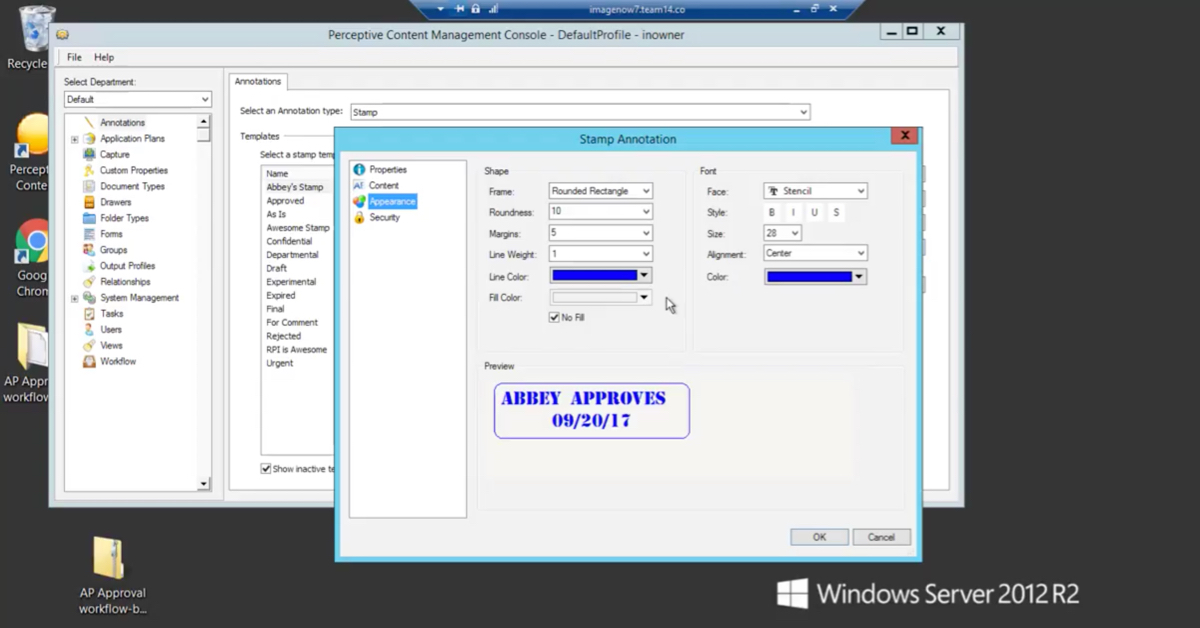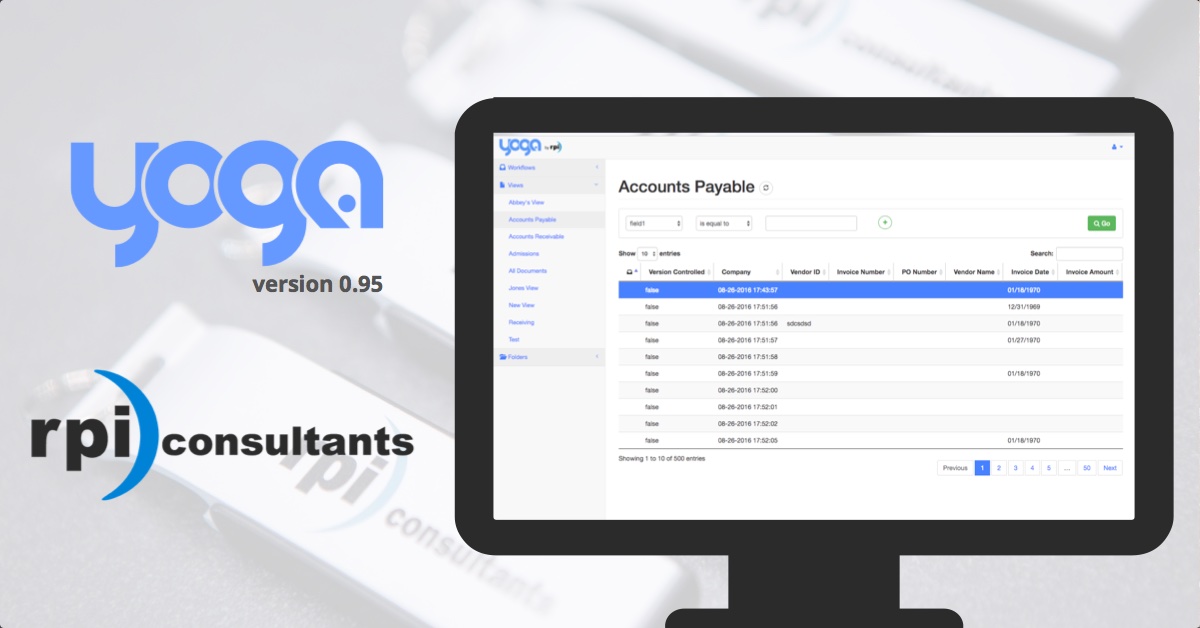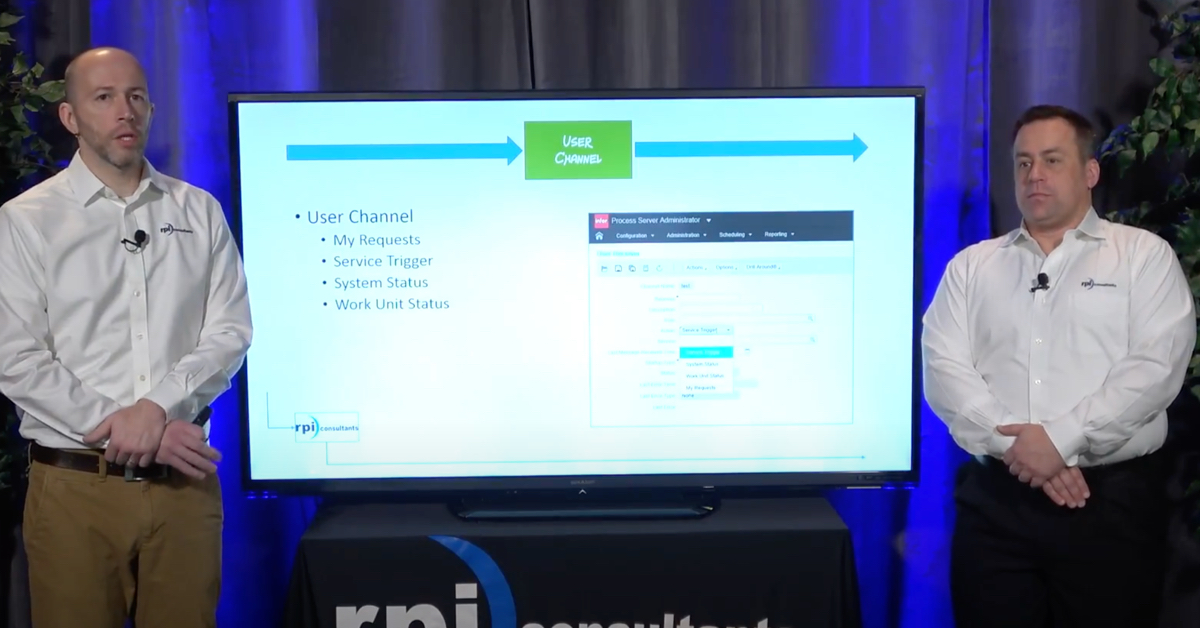John Marney:
Thank you for joining RPI Consultants Summer Webinar Series. My name is John Marney and this is Michael Madsen, our main presenter. We’re going to be discussing how you can audit your email document imports using RPI’s email capture service.
So first, a little bit about RPI for those of you who don’t know. We’ve been working with the Perceptive platform for around 16 years, and also with the Kofax platform for most of that. In the last year or so, we’ve started picking up the Hyland products as well. We are a Hyland partner. In fact, we have just brought on board the senior architect, Sydney Isle, to help us kickstart our support for those products.
We have around 20 team members in this practice on the imaging team, and we’re headquartered or we’re based out of Kansas City. That’s where we’re broadcasting from today. The remainder of the company around 70 people focus on the Infor Lawson products. Our headquarters are in Baltimore. We also have our Lawson Technical Practice based out of Tampa.
Just a little bit about what we do. Of course, we do a lot of eForm and iScript development enhancements to people’s existing platforms. But we can do from the ground up workflow designs or redesigns. Maybe you’ve been using your product for three, five years, and you’d like to revisit some of your pain points. We also do health checks to help with that. We’ll bring up to the latest version with an upgrade, and of course if you’re coming from a legacy system, we can do a migration and we have a really good team around our clinical and HL7 solutions as well. Mike.
Michael Madsen:
Thank you John for the introduction. So what is the EC service? The EC Service is an email capture service that we’ve developed in-house at RPI. It’s fully customizable because it’s developed in-house. It’s platform agnostic so we can make it work with whatever platform you have or that you need it installed on to. It’s easy to install and we can provide the installer guide at your request.
Another note is that for right now there’s no licensing on it so there’s no cost for you to own.
John Marney:
Yeah, and it has a number of features. This is not integrated specifically with Perceptive Content. This basically will just integrate with your email box to download emails and images. This can be used with Kofax products or Hyland products as well. We can integrate with any type of email inbox, Exchange or Office 365, POP3, IMAP. Of course it can delete emails, it can move emails from folder to folder, it can flag emails as read or unread, just depending on the configuration that you need.
Michael Madsen:
So why is there a need? A lot of people already use a mail agent for their mail processing. We’ve added in some things that we know there’s a need for like auditing, handling unique email types, and customizability to meet your business. For auditing what we mean is that we have tables that store the emails and attachment or the data of emails and attachments that you’re downloading from your inbox, that you can go back to in those database tables to reference, to verify any kind of information that you’re looking for.
In regards to handling unique email types, by that we mean many customers have foreign vendors who may have special characters. With our service we don’t have any issues processing those and we can pull them in normally.
John Marney:
And of course for customizability since this was created in-house, if you have any specific handling you need around certain inboxes, certain file types, certain documents, we can definitely make the platform do whatever you need.
Michael Madsen:
We’ll go through a little bit of the EC Service architecture. The way that we put the EC Service together it basically just runs as a Windows service and leverages its own database. By that what we mean is we can either piggyback off of the INOW database and build our tables out there, or if you have a business need for it you can create an entirely different database for it to connect to, to use to store the information of the emails and the attachments.
John Marney:
That is a significant difference from the mail agent. For the email capture service made by RPI all of our configuration and all the data is stored inside of a database and the files themselves are dropped into the file system. There is a configuration file but it doesn’t contain most of the information needed to set it up.
Michael Madsen:
Right, and the documents that are downloaded from the attachments, once the EC Service downloads those documents, the EC Service is essentially finished with its job. From there the way that we get it into your system is by either using Import Agent or iScript. The reason that we would use either or, you might use Import Agent if you don’t have as complicated requirements for your import process. If we just have literal values that we’re pulling in in the index keys or the index structure, then we can kind of just stick with Import Agent. If you have something more complicated like you want to camp to another database to do any kind of validation or data checking or anything like that, we can build that out in an iScript for import.
John Marney:
We’re going to go through, this slide we’re going to go through a quick setup walkthrough and then in the following slides we’re going to kind of go into a little bit more detail around them. The first step for email capture service is to add the tables to the image INOW database. Again, this can be in a custom database as well. It definitely does not have to live in the INOW database. We would then run the installer to install the email capture service as a Windows service.
The next step is to configure the email service ini to point to the correct database, that’s your connection string, and to get it connected to the proper tables. Again, the mailbox configuration is not in that ini file. The mailbox configuration is actually in a database table. That’s where we would provide our mailbox name, server name, username, password, things like that. Then finally we configure the Import Agent or an iScript to pickup the attachments that are actually stored in the file system.
Michael Madsen:
In this slide I’m kind of just giving an overview of what the actual database looks like. We won’t go into each of these tables, but we’ll just talk about the important ones that you guys care about. The first is going to be EC document, and that’s where we store all of the information for the attachments themselves. Next is EC email where we store all of the data around the emails that are read by the EC Service. And then finally the EC mailbox, which is where we set up those inboxes.
So first on the EC document, here we’re going to store all the attachment records, we’ll store original file names, and it links with the email ID here in the source email column. I kind of gave just an example of what the table looks like here. It may be hard to see in the video but if you download the slides it’ll be easier to go over. The source email column here is where we’re actually linking the attachments to the email that was read by EC Service. For auditing purposes I can look at this source email number and say, “Okay, these attachments match to these emails in the email table.”
Next is my storage folder. There’s a table where we’re setting up each individual folder where we’ll download those attachments to, and each of those folders are applied to a certain inbox. This is essentially telling us this is coming from this email and it was set up to be stored in this folder. And then finally we have the original file name and the doc file name. The difference between these is that the original file name is the file name of the attachment when we originally downloaded it. The doc file name is the unique file name that the EC Service has given to the attachment.
This is customizable based on your needs, so if you do want to keep the original file name, we can definitely do that. Just in this example we wanted to make sure that we weren’t overwriting downloaded attachments with other attachments that may share the same name. So we’ve given them these unique names. Finally, the doc folder is essentially just telling us where the directory is that the attachments are being stored. I can look at my file names, where they are, and what emails they’ve tied to.
There’s more to this table, but obviously I can’t fit it all here. So just know that if you have any questions about what else we can capture, anything like that, let us know. This is just really the meat and potatoes of it I guess.
John Marney:
Important to note is we’ve discussed how we are just downloading the emails and attachments into the file system and then allowing some other process to pick it up and actually import it into the system. We could have this integrate directly into Perceptive Content or another system using something like integration server to streamline that a little bit. However, for security reasons we have gone with the file system approach. It allows us to use Windows file system auditing as an extra layer of checks. That also could allow you if you wanted to add in another layer of virus scanning and/or antivirus to check the files before they’re actually executed by another process.
Michael Madsen:
Next we’ll go through the EC email. What we previously went through was the attachment itself. The EC email table is regarding the email itself that the attachment was tied to. In this table we’ll be recording everything about the email records like the email address, the subject line, the date and time the email was received, and the date and time the email was processed. The difference between the received and processed times is the received time is going to be when it actually entered the inbox. The process time is when the EC Service picked it up. So if you’re ever doing any server maintenance or you have an issue where a server goes down or something like that, you’ll be able to see that reflected in the tables here, looking at those dates.
To go through some of the columns here, again, we have this email, this e-mail ID column where this is what we’re linking to in the document table. We have Exchange message IDs here. So these Exchange message IDs are pulled directly from our example that we’re using with an Exchange inbox. We have the sender email, the subject line, and those are received and processed dates. Again to reiterate, there’s a lot more data here. This is just the stuff that I felt was most pertinent to include in this example slide.
John Marney:
And that Exchange message ID is at the end of the day a big driver in our ability to audit. We want to be able to take this list of Exchange message IDs and compare it to the list that Exchange has so that we can have a one-to-one relationship so we have confidence that we received and documented every email and it has come into our system.
Michael Madsen:
Then finally the EC mailbox. I didn’t include a picture on this one just because it’s pretty straightforward. The EC mailbox is going to be the table where you enter your email address, your domain name, your username and password. It’s what EC Service uses when it attempts to enter the inbox to pull the attachments. This is where we can set up multiple inboxes. There’s just another table line for each inbox that we can configure, and they can use different domains, different user names, different passwords, it can be different servers. It’s whatever your needs are, we can set it up here.
But I think the biggest takeaway for the EC Service is definitely auditing because there is a huge need for that and it’s something that isn’t really taken care of now. If auditing is something that you’re really passionate about and you really need, if you want to know what was pulled into Perceptive Content versus what was in the mailbox, this is the way to go and this is the way you’ll get that information.
John Marney:
Absolutely. All right, that pretty much wraps up this presentation. As part of this week, we’ve already done three other webinars. Like I said, all of those are going to be available on our YouTube channel. If you’re interested in some of the other things we’ve talked about, and we have webinars from the past as well. We’ve been doing these for about the past year or so. We have one more webinar as part of this series around Kofax KTM learning server. That’s going to be tomorrow morning, and that’s going to discuss the KTM’s OCR capabilities and how to continually improve those over time.
That’s it. We’re going to open it up to questions. If you would like to sign up for the remaining webinar or see descriptions of the other ones we’ve done this week, please go to rpic.com/ists-webinars, and there’s our information at the bottom of the slide. In case you’d like to reach out, you’re always welcome to email us. Okay, so do we have any questions?
Speaker 3:
One question. Can reports be generated off of this data and how would those reports be displayed essentially?
John Marney:
Yeah, absolutely. That’s one of the beautiful things about putting all of this information into a database. That makes it ultimately infinitely reportable now. So if you wanted to build something like a bi report we would just set up a new data source on bi and we could marry this up to information for the documents themselves in Perceptive Content. Additionally, we could set up a data source against your Exchange database and marry up that data so that we could be able to have line by line everything that came into the inbox and where it is in workflow.
Michael Madsen:
Essentially anything that you see in the database we can report off of. Anything that you saw here, we can build it into something.
John Marney:
Very good question. Anything else? All right. It sounds like that’s it. If you have any other questions, please feel free to reach out. We also definitely encourage ideas for future webinars. We do these roughly quarterly, so here around Christmas we’ll be setting up another series. So if there’s any topic in the Kofax, Perceptive, Hyland realm that you’d like to know more about, please just let us know. We would be happy to talk your head off. Thanks for joining us and have a good week.
Michael Madsen:
Thank you.


























